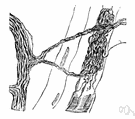The library of 100 publications, spanning the use of Avance Nerve Graft and the Axoguard family of products, includes: Research from nearly 300 surgeon and clinical investigators; More than 90 independent non-sponsored papers, which highlights growing surgeon interest and acceptance of the Axogen portfolio of products; Repair of digital nerves in 37 publications and repair of mixed and
motor nerves in 29 publications, with consistent results in short and long gap nerve injuries and sensory, mixed and
motor nerve repairs; 18 publications in oral and maxillofacial reconstruction, a growing surgical application; and Six publications featuring data reports from the RANGER Study, with an 85% overall meaningful recovery rate across all nerve repairs in the study.
Table:
Motor nerve conduction velocity (MNCV) and sensory nerve conduction velocity (SNCV) data of the patient.
The sensory and
motor nerve conduction velocities, latencies, and amplitudes were recorded.
This brings the current to nearby
motor nerve structures that stimulate contraction once the action potential is reached.
Motor nerve conduction velocity (MCV), CMAP amplitude and distal motor latency (DML) were determined in the
motor nerves.
"The enzyme was administered not within the lesion itself, but lower down within the spinal cord, where
motor nerve cells reside that send axons out to the diaphragm and forearm."
The
motor nerve and sensory nerve conduction studies were performed on median and ulnar nerves bilaterally in upper limbs.
Routine electrodiagnostic tests including sensory and
motor nerve conduction studies for the median and ulnar nerves were performed using a Viasys Medelec Synergy EMG device.
Tetanospasmin, for example, enters the
motor nerves and surges back up them to the spinal cord where it inhibits
motor nerve function.
Motor nerve damage can result in muscle weakness, uncontrolled twitching that can be seen under the skin, decreased reflexes, and severe muscle shrinkage.
 motor nerve - a nerve that conveys impulses toward or to muscles or glands
motor nerve - a nerve that conveys impulses toward or to muscles or glands